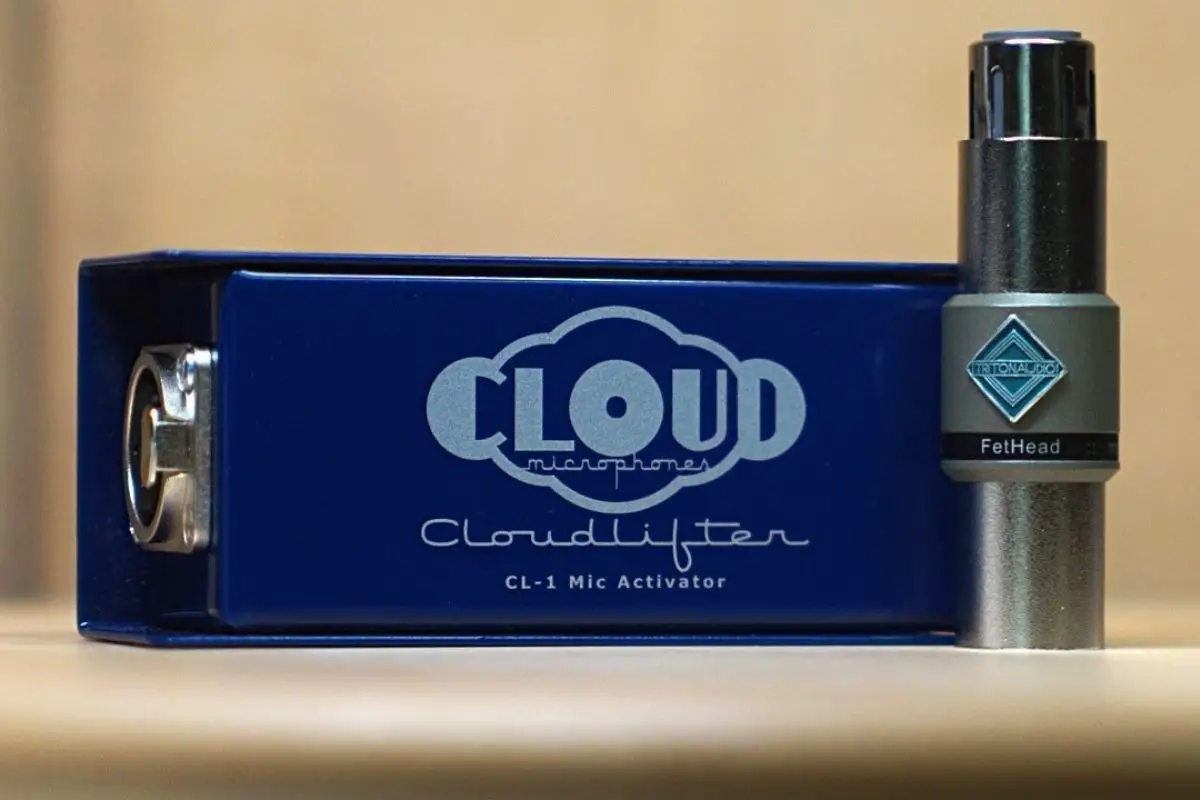If you’re planning on making it big in podcasting, you need to ensure that your audiences can hear everything you have to say.
You can do many things to improve the audio fidelity of your podcast, such as soundproofing your room, purchasing outstanding mics, or even repositioning the furniture in the room.
However, perhaps no part of your setup is more crucial than a suitable mic activator.

Many don’t realize how crucial a mic activator can be to improve sound quality, especially for podcasting.
The mic activator is crucial as it boosts all input signals sent into the mic. All sounds you actively feed into the mic will be amplified, which leads to much clearer audio.
There are many mic activators to choose from across the internet, but perhaps no models are quite as recognizable as Fethead and Cloudlifter.
But which of these two models is the best? Which one will offer you the best fidelity and take your podcasting skills to the next level?
Let’s find out together! Read on below as I pit the two against one another.
Table of Contents
Price
The first thing that you would notice when comparing the two models is that they both boast incredibly different prices.
The Fethead activator is most commonly priced at around $60, while the Cloudlifter is often priced well over $150. But why is the price so different between the two? Read on, and you will find out.
Size

Both models are pretty comparable in this regard. The two products are very compact but still provide massive benefits for audio recording.
Each unit will easily fit into your pocket and is lightweight. The Cloudlifter is around 0.75 pounds, while the Fethead is around 0.175 pounds.
The Cloudlifter features a square shape and is protected by a metal casing, making it incredibly sturdy to carry around with you.
It is also worth considering where the unit is hooked up to the mic.
The Cloudlifter is attached to the mic much further down the wire, between the mic and the mixing desk or recording platform, which means it will need to rest on a surface.
This makes the square design perfect for holding it in place. The Cloudlifter is also slightly larger than the Fethead.
The Fethead, on the other hand, is attached much closer to the microphone itself, and it features a cylindrical design that allows it to blend in seamlessly with the shape of your microphone.
Despite costing less, the Fethead is still made up of high-quality metals that keep it protected, making it much easier to carry about with you.
Power
Both of these products use phantom power, which is incredibly beneficial.
Phantom power refers to a system that allows the activators to work without any external power source outside of the microphone itself.
Phantom power allows the unit to simply use the power that it is already gaining from the microphone and the mixing desk to create its power.
However, both of these products stand out in terms of power usage because they are both safe for use with absolutely any microphones.
Phantom power can damage many microphones, which usually means that many have to miss out on similar mic activators.
The Cloudlifter and the Fethead, on the other hand, only utilize the phantom power to power their circuitry. None of that power is then sent back into the microphone.
This helps to protect microphones that might otherwise be damaged by phantom power from being damaged!
Gain
This is one area where the two products vary slightly. The Cloudlifter offers between 20 to 25 decibels of low noise gain.
This means that your microphone will more easily distinguish different noise levels and accurately reflect those on your recording platform.
However, the Fethead offers an impressive 27 decibels of low noise gain. Although the difference isn’t huge, it does mean that the Fethead can handle a slightly louder range of noise.
However, this difference is quite negligible when it comes to recording podcasts. The increased gain with each activator allows it to pick up on important noises you intend to be recorded more easily.
This means that tapping on tables or moving things around in the room is less likely to be picked up by the recording software.
It also means that the recording sounds slightly less ‘fuzzy’ and better suited to podcasting.
The activators also make it easier to pick up on minor noise levels, such as whispering. So even if you speak a little quieter in certain parts of a particular episode, the microphone will still pick up what you are saying, so nothing is lost.
The Cloudlifter can automatically adjust its range depending on the input levels from the mic you have attached.
Thus it is perfect for those who want an activator ready to work with all of the mics you may have.
On the other hand, the Fethead has no automatic adjustments, but it offers a slightly larger audio range, so it will pick up on more sound fed into it as you record to pick up even on hushed tones.
This can help to give your podcast a greater sense of tangibility and texture, and it will help your listeners feel like they are present in the room with you!
Ease Of Use
A critical consideration for anyone looking to purchase a mic activator is whether it is easy enough to use.
You don’t want to purchase a mic activator that is too advanced for you to use correctly and thus costs more money. You also don’t want to go for one that costs less but does not give you the control and precision you require.
Luckily, both the Cloudlifter and the Fethead are pretty easy to use. Each device is hooked up very simply to the microphone you are using.
Either directly on the bottom, in the case of the Fethead, or the XLR wire of the Cloudlifter.
Each device is effortless to use to make your recordings crisper and cleaner.
The Cloudlifter will automatically adjust audio levels so that no matter the specifics of your microphone or how much sound you feed into it, the sound will never plateau.
This helps to make your podcasts sound clearer. And all it takes is simply plugging the unit into your recording system.
On the other hand, the fethead requires you to manually set the volume levels before you start recording.
Once you have adjusted the volume levels, there is no need to touch anything else until you are ready to end your recording session.
However, this process is straightforward and won’t cause you any particular difficulty. You’ll be recording fantastic-sounding episodes of your podcast in no time.
In terms of plug-in-and-go accessibility, the Cloudlifter wins out just slightly here, as it does much of the heavy lifting. Thus, you can use it with many different microphones without adjusting it and still receive very similar results.
Sound Quality

When it comes to sound quality, the Cloudlifter is the clear winner.
This is because it will automatically adjust its gain levels and the amount of sound that it will actively pick up, making it possible to capture more detail in your voice and background noises.
This is especially helpful when you want to record a podcast because any adjustment in your tone or pitch will easily be picked up without becoming too quiet or too loud.
The recording on the Cloudlifter also sounds crisper, which allows your podcast to shine amongst the competition and sound incredibly professional.
This kind of attention to detail sets the Cloudlifter apart from the rest of the mic activators available on the market.
The Fethead, however, does not perform terribly. It has a much larger gain range which allows it to pick up more sound, so if your podcast could move from hushed tones to louder tones very quickly, it could be the perfect option for you.
Larger gain also means smaller background noises such as moving things around may be picked up.
However, provided your recording set-up is adequate, this should not be anything to worry about.
Fethead Vs. Cloudlifter: Which Is Best?
This is a tricky question to answer, as the two offer very considerable benefits that can change your experience with each one.
Both are very affordable and professional mic activator options that allow you to make your podcast sound better than ever before.
In terms of ease of use and offering a more professional suite of features, the Cloudlifter does come closer to winning out as the best option.
The Cloudlifter features automatic sound adjustment, allowing it to record clear and crisp sound every single time without any input needed. This means it can be used with just about any microphone.
The automatic sound adjustment of the Cloudlifter also means that it can more effectively filter out unwanted noise from your recordings.
For instance, if a guest moves around quite a bit, causing their chair to make noise, then those noises are less likely to be recorded so that the focus is always on your voice.
The Fethead still provides immense audio fidelity, and it also does so at a far smaller price, which means that you don’t have to break the bank to access the quality sound recording.
However, the Fethead does not feature any automatic gain adjustment, which means that extra sounds can easily leak into your recordings; this is partly thanks to the increased audio range, which is slightly higher in the Fethead than in the Cloudlifter.
However, the Fethead is still a desirable option, especially if you don’t want to spend too much.
If your recording setup is effective, you will not have any trouble with the Fethead allowing unwanted noises to slip through.
Thus, the choice comes down to price in the end. If you are willing to spend more money on automatic sound adjustments and fidelity, go for the Cloudlifter.
But if you only need an essential mic activator that still has everything you could need, then go for the Fethead, which has a lower price!